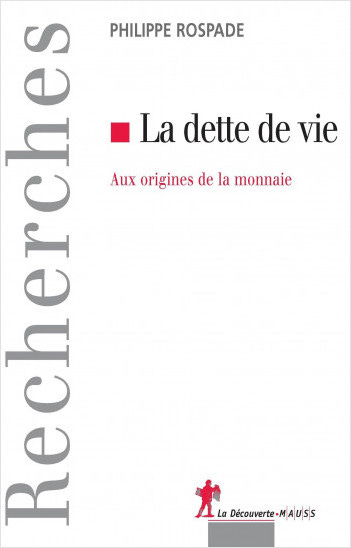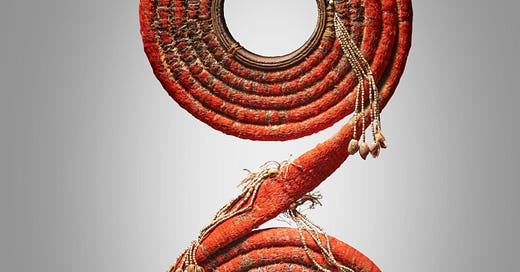Chapter 6 (Part 1): Games with Sex and Death, Debt The First 5,000 Years by David Graeber
The missing women and how women came to be currency
Dear Reader,
I am still reeling from how slow reading impacted my way of thinking.
It was a really good move to break down Graeber’s scale of debt and morality into three parts. I had a better grasp of what Graeber was trying to say (I will probably go back to the original text at some point to re-write them.) The insight will take time to percolate (more than a week than the writing cycle allows). That said, I quickly applied it to a real-life situation.
Using the model, I quickly ‘saw’ and applied Graeber’s morality model to understand a present situation. A friend of mine felt perplexed, guilty, and helpless about her workload. She could not seem to stop ‘giving’ extra hours to a boss in her research cohort. She felt guilty about withholding it even though it was correct to do so. She proceeded to liken it as a debt burden she felt she owed!
This is what Graeber has been warning us about: the language of debt entering our interpretation of social interactions. In Graeber’s model, this falls under a hierarchical relationship. This means reciprocal relations go out the window. From my friend’s perspective, she is wrapped up in a reciprocal relationship in which she would endlessly ‘give’ hours but with no acknowledgement or end of ‘gift-giving’ in sight. The whole relationship devolves into a precedent, what Graeber describes as a one-sided gift-giving with the powerful party not expected to return any gift. True enough, those in the higher position fail to acknowledge the extra gifts because it has always been done that way. Precedent and custom matters here to the disadvantage of those in the lower strata.
With clarity, I hope I have given her some comfort and bravery to turn the situation around. I just wanted to share how insights can be brought to bear in real life.
Now on to more illuminating insights into how this situation came to be.
How do obligations turn into debts?
In this chapter, Graeber asks several cascading questions behind our present economic conundrum:
Where are the (economic) stories of women?
How did slaves (particularly women and children) end up as currency?
How did women and children stand for the debts of men, no different than cattle, sheep or objects?
Graeber wants to re-introduce what has been left off much of human economic history and in the next two chapters he is tackling:
the role of money in a human economy (in contrast to the commercial economy)
the transformation of human economies into commercial economies (colonialism and slavery as precursors)
the emergence of commercial economies in Europe and the Middle East
In doing so, I hope that he will provide sufficient evidence to answer these questions convincingly. For questions one and two, Graeber lifts much of his research from the journal article featured in our Addendum series on the Violence of Equivalence. However, I will maintain his flow here and summarise key points. For today’s article, if you have been following so far, let us revisit primitive money and why this money is part of a humane economy.
Defining ‘Primitive Money’ and a Humane Economy
‘Primitive money’ as a term is problematic. It refers to all non-capitalist money found at that time outside of the Western trading regimes. Historically, this non-capitalist money was excluded from any economic history but was typically lumped under the purview of anthropology. This exclusion and separation, as Graeber laments, results in our failure to build what he calls a humane economy today. For our purposes here, I will maintain the usage to contrast with ‘money’ as we know it.1
It was called as ‘primitive money’ because in these small non-Western communities, it possessed characteristics of money. It has great value, people desired to acquire them but also to spend and exchange with others.

The exception is that you cannot exchange ‘primitive money’ with commodity goods. Instead, the primary purpose of ‘primitive money’ is to create, maintain, organise and transform relations between people. Therefore, it is mostly used to arrange marriages, criminal retribution, treaty negotiations, recruit followers, prevent inter-group feuds, children paternity, funeral gifts and other multitude purposes. What it cannot do is shopping for your groceries. This is why Graeber calls this as ‘social currencies.’
Social currencies are not to accumulate wealth (except when the objects themselves are treated as art and ripe for commercial trade at Sotheby’s). Instead, social currencies mark the ‘creation, destruction, and rearranging of human beings.’ The purpose of money then in a humane economy is to support the social interactions of human beings.
Money is No Substitute to People
Graeber brings up the important research by Philippe Rospadé, an economist turned anthropologist who published the work The Debt of Life: The Origin of Money

Here, Graeber highlights Rospabé’s argument that ‘primitive money’
was not originally a way to pay debts…it’s a way of recognizing the existence of debts that cannot possibly be paid. p. 131
If there is a debt that cannot possibly be paid in a humane economy, that means that, an exchange of ‘primitive money’ cannot represent or substitute for people. There is no one to one exchange value between a person and a social currency.
Let’s take the practice of ‘brideprice’ or the valuables given by the groom’s family to the bride’s family. It is easy to see how this may appear from a Westerner’s perspective: it looks like they are buying women. This scandal was debated in 1926 in the League of Nations thinking it is a form of slavery. Anthropologists had to explain that this was not the same as a purchase of cattle. Marriage is re-arranging the relationships between families.
if you are purchasing a wife, this means that you can sell her; marriage does not do that
the payment ensures the status of the progeny and the right to call them as one’s children
Anthropologists won the argument and ‘brideprice’ became ‘bridewealth’ in some of the literature. What is really happening here, Graeber asks? Is the family paying for the future service of the bride in the family’s farm and gardens? Are they paying for her fertility? Are they confirming a contract?
Graeber says that according to Rospabé, it is none of these reasons.
It is the acknowledgement that the value of the bride is impossible to calculate. There is no equivalence and so the groom’s family is left with exchanging a currency to mark an outstanding debt.
Next week, we’ll discuss how the Tiv of Central Nigeria deals with this outstanding debt.
Round-Up
Graeber noticed a conspicuous gap in economic history. There seems to be a glaring absence of women and other activities outside of commercial transactions. These activities were left under the purview of anthropologists and a gap ensued between our commercial economy and a non-commercial economy.
In this chapter, Graber sheds a light on why it is significant to understand this non-capitalist economy. By ignoring these activities and transactions, Graeber remarks that we lose the opportunity to understand our present condition and build a humane economy.
The components of a humane economy includes:
‘primitive money’ - a social currency that serves to support the creation, maintenance, and transformation of human beings across the life cycle and life’s conflicts (marriage, conflict resolution, healing, etc.)
an acknowledgement that there are debts that cannot be paid
an acknowledgement that people and currency can never be equivalent or substitute each other
If these are its features, what happens when a social money is exchanged between people? How can an impossible debt be paid (or not)?
Next week, we will see how the Tiv of Central Nigeria solved this conundrum.




